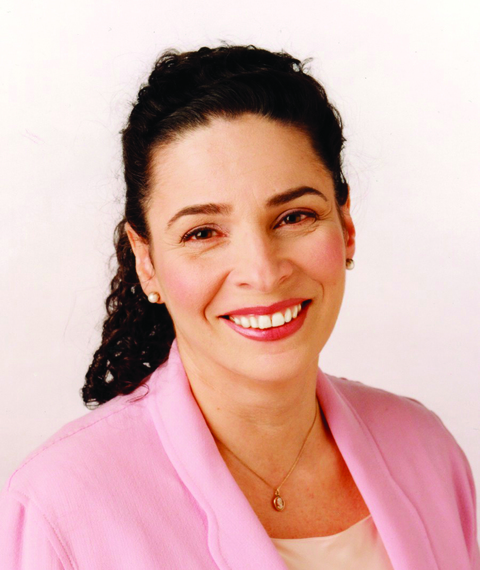In April, people around the world celebrate Earth Day. This day was created in 1970 by Senator Gaylord Nelson, and it is a great time to celebrate and appreciate one's connection to the environment.
Some people use this time to plant trees and attend events about sustainable practices. Earth Day brings awareness to a social, political and economic movement that affects us all on a daily basis (even if we don't think it does). What happens after Earth Day, with your daily individual practices, is what the collective movement is all about. We need to all move forward thinking about how our small daily habits have huge effects on Mother Earth.
Most of us know about going green with our foods and eating organic, which has positive effects on our bodies, and helps protect the earth. But what about the products you actually put on your body?
The term "green beauty" is not only about what the ingredients your personal care products do to you, it's also about the effects it has on the environment (before and after you use them). The truly green consumer should also be conscious about how the farmers that grow those ingredients are treated and paid.
According to a survey done on 2,300 people by Environmental Working Group (EWG), the average person uses nine products daily. This becomes over 10,000 unique ingredients that go back into the earth. How are we, on a day-to-day basis, connecting the dots?
I had the chance to speak with Rona Berg, editor-in-chief of Organic Spa Magazine. Rona is also a best-selling author, and chairs the Personal Care Committee of the non-profit Green Spa Network, where she advises personal-care brands and spas on how to become greener and more sustainable.
Karim Orange: Green Beauty has become a huge trend, but I think sometimes how it connects to environmental issues is sometimes missed. Can you please explain how the average person should connect the dots in their thinking and practices?
Rona Berg:When you use your cleanser at night, or wash the bathroom sink with your household cleaning products, ask yourself, what is it that is washing down the drain? Where does it go? When it absorbs into our rivers, our soil, our lakes and our oceans, how does it impact our health and the health of the environment?
When we throw our plastic bags and packaging away, where is "away"? In fact, there is a trash vortex bigger than the state of Texas in the Pacific Ocean, and one in the Atlantic, too, where those plastic bags swirl, polluting the waters and choking birds and turtles, and, because they are not biodegradable, they never go away.
K.O: We often see and hear the term 'Fair Trade' is this a label we should look for in beauty products? What should we be asking ourselves about the products we purchase pertaining to their individual social responsibility to the Earth? What certifications truly encompass this?
R.B: Many companies -- and consumers -- are now spotlighting the back story, or the provenance of their goods and purchases. For example, where do they come from? How were they made? Were the workers fairly compensated? Were they made by a nine-year-old in a sweatshop in South Asia? This kind of awareness is so important, because whatever we buy we ultimately buy into, and support with our dollars.
Fair Trade USA (fairtradeusa.org) is a nonprofit that helps farmers across the globe build sustainable business. It also audits and certifies that Fair Trade products were made under fair and equitable conditions. B Corporation (bcorporation.net) is another great organization that certifies businesses that agree to hold to a high standard of transparency and accountability.
There are many fine, ethical businesses that do not certify, but these certifications are a way of letting consumers know that a business may share the same values that they do.
K.O: You have been the 'go-to' person in the green beauty industry before the trend. How did this evolve from your days at Elle and The New York Times? Is this something you grew up practicing?
R.B: Back then, natural and organic beauty products were thin, runny, beige and not the most appealing, on an efficacy or sensory level. But now, thanks to consumer demand, the market has come up so far, and there are many brands with gorgeous formulations in beautiful packaging, and they really work, without the ingredients in traditional products that our own Environmental Protection Agency (EPA) cites as potentially harmful. So the question really becomes, why wouldn't you use them?
K.O: Any advice for women who have decided they want to go in the green beauty direction?
R.B You don't need to throw everything away at once. Phase in new products slowly. Prioritize. For example, it is more important to go green with a moisturizer or foundation that sits on your face all day, than a cleanser, which washes right off.
Find resources that you can trust. Educate yourself about potentially harmful ingredients, and ones that may be sensitizing to your skin. You don't need to be a cosmetic chemist to learn the basics on how to read ingredient labels and try to avoid the pore-clogging petrochemicals and artificial colors (FD&C or D&C colors) that the Environmental Protection Agency (EPA) lists as human respiratory toxins. Like a food label, a beauty-product ingredient label is top-loaded: the first half indicates the ingredients present at a higher percentage.
Sample green products and enjoy discovering new brands that you know will not only enhance your beauty on the outside, but are also good for you on the inside. Believe me, once you go green, you never go back!
You can follow Rona on Twitter@RonaBerg for daily tips on green living.
In conclusion I hope that everyone enjoyed Earth Day 2015. This year's slogan was 'It's our turn to lead.' Leading is a daily practice that can only be done when we raise our conscience to that of the collective.
Next up as part of my green awareness series Rohan Marley talks sustainable coffee manufacturing and Rastafari.

